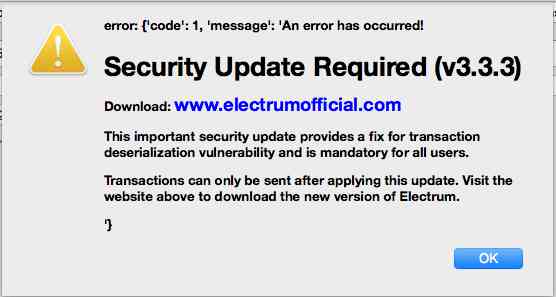With blockchain technology and AI converging with the greater public – even reaching Joe Rogan’s massively popular JRE podcast – there’s never been a better time to explore the intersection of both these technologies.

By definition, a blockchain is a distributed, decentralized, immutable database used to store encrypted data. In its purest form, AI is used to describe the theory and practice of creating machines capable of carrying out tasks that require intelligence.
It goes without saying that each technology has its own individual degree of complexity, but the combination of the two may be beneficial to both.
Over the years, academics have looked at the possibility of combining blockchain and AI but, let’s face it, real-world applications are still few and far between. In fact, both technologies have lived in relative isolation over the past decade, but this is quickly changing.
AI, blockchain and data
It’s fair to say we find ourselves in an AI revolution of sorts and this is mostly due to the progress being made in the field of Big Data.
The handling of data is an increasingly hot topic and businesses dealing with it – for commercial reasons or otherwise – have a legal and moral responsibility to safeguard it. Blockchain and AI can make a substantial impact in the way this is handled.
The emergence and abundance of data has helped catalyze blockchain as a viable data storage solution. Unlike cloud-based solutions, the data on a blockchain is broken up into small sections and distributed across the entire computer network. There’s no central authority or control point, and each computer, or node, holds a complete copy of the ledger – meaning that if one or two nodes are compromised, data will not be lost.
All that takes place on the blockchain is encrypted and the data cannot be tampered with. Essentially, this means blockchains are the perfect storage facility for sensitive or personal data which, if processed with care with the use of AI, can help unlock valuable bespoke experiences for consumers.
A good example of this is the healthcare industry – where data is being leveraged to detect, diagnose and prevent disease – or the way in which prevalent streaming services such as Spotify or Netflix use data fed into their platforms to provide recommendations for their customers.
Tracking power
Decisions taken by AI systems can be difficult for humans to comprehend, but blockchain can shed new light on this by helping us track the thinking process, and understand decisions.
Imagine you’re sat in a Maths lecture, and the professor is explaining an algorithm by outlining the process between premise and answer on the board. In so doing, though, the professor inadvertently misses out various key steps, which helped him or her arrive at a conclusion. Can you see why this would be confusing for some students in the room?
Being able to record AI’s decision-making process on a blockchain could be a greater step towards increased transparency. In this instance, blockchain would serve the same purpose as the board, with the exception that the information written on the latter can be modified or erased whereas on the blockchain it would be immutable and permanent.
Computing
Finally, although they are incredibly useful in our daily lives, computers are unable to carry out a task without receiving explicit instructions.
If you were to operate a blockchain, with all its encrypted data, on a computer you’d need large amounts of processing power. The hashing algorithms used to mine Bitcoin blocks , for example, take a “brute force” approach – which consists in systematically enumerating all possible candidates for the solution and checking whether each candidate satisfies the problem’s statement before verifying a transaction.
AI affords us the opportunity to move away from this and tackle tasks in a more intelligent and efficient way. Imagine a machine learning-based algorithm, which could practically hone its skills in ‘real-time’ if it were fed the appropriate training data.
Although blockchain and AI have great potential in their own right, one can’t help but wonder what they may achieve if their combined force were put to good use. Both technologies are mutually inclusive, and could potentially pave the way for a much more transparent, and efficient world. Watch this space.
Ford drives cobalt supply chain transparency with IBM blockchain
Ford has become the latest company to jump on the blockchain pilot bandwagon.

The American car manufacturing giant is conducting a blockchain trial in a bid to trace cobalt, found in the lithium-ion batteries used by electric cars, from a Chinese-owned mine in the Congo.
Ford is using decentralized ledger technology to ensure that none of the cobalt mined is linked to human rights abuses.
South Korean cathode maker LG Chem and China’s Huayou Cobalt are also participating in the pilot.
The project will leverage IBM’s Blockchain Platform, which is powered by the Linux Foundation’s Hyperledger Fabric.
The pilot, due to be completed in mid-2019, is a prime example of how blockchain technology can potentially be used to increase the transparency of supply chains and comes amid increasing pressure for companies to behave responsibly when it comes to sourcing materials.
Speaking to Reuters, Manish Chawla, general manager of IBM’s mining and industrial sector business, said: “There is no fool-proof method, but you have to keep the ball moving forward, to keep raising the level of accuracy. Blockchain has been proven to be a very effective technology in raising the bar.”
IBM‘s Blockchain Platform seems to have proved popular among enterprises, with mainstream financial giants such as Visa and Danish conglomerate Maersk also using the tech company’s proprietary tech to conduct their own trials.
Bitcoin wallet Electrum hit by DoS attack from 140,000-strong botnet
The servers of popular Bitcoin wallet Electrum are under heavy attack , and users are advised to be extra careful when using the platform until it’s resolved.

A sophisticated botnet of more than 140,000 machines has launched Denial-of-Service (DoS) attacks on Electrum‘s servers , with apparent intent to direct users to compromised versions of the software designed to steal their Bitcoin.
Bad actors have even deployed their own Electrum servers hosting “backdoored” versions of the Electrum client en masse. If a user successfully syncs their vulnerable Electrum wallet with a malicious server (hundreds detected so far), they’re instructed to “update” their client with a hacked version.
A security researcher familiar with the matter told Hard Fork if these fake versions of Electrum are installed, all funds contained in the old versions are immediately lost.
“The total amount stolen is in the millions of dollars so far, with a single person alone losing almost $140,000, based on our analysis,” they said. “The DoS attacks are a new level, which only began about a week ago. People have seen 25 Gigabits per second worth of traffic being flooded at community run servers.”
Electrum users are warned they could face service interruptions as administrators continue work to mitigate the damage caused by the intense incoming traffic.
“We hope to resolve this in the coming hours or days,” lead Electrum developer Thomas Voegtlin told Hard Fork.
This could be retaliation over new protections for Electrum users
Bitcoin phishing has actually plagued the Electrum community for months . Indeed, Trojan horse electrumstealer and its variants are thought to have already stolen millions of dollars worth of Bitcoin from unsuspecting Electrum users.
Whilst there’s no explicit link connecting this DoS attack and the phishing campaign, the latest attack seems focused entirely on users with out-of-date Electrum clients.
Our source explained that devs modified some key Electrum servers to reduce the odds of exposure to the phishing scam. It is this, they speculated, that has led the attackers to perform such a large-scale DoS attack against Electrum‘s servers.
“With the benign servers down due to the attack, there’s a strong likelihood of people connecting to the malicious ones,” they said. “Original versions of the attack used modified Electrum servers, abusing a bug in the Electrum wallet, to send messages telling users that they need to upgrade their software to a malicious version. These were originally tackled by using Google’s SafeBrowsing service to make them inaccessible to possible victims.”


Currently, there are over 200 detected domains that appear to be hosting the Electrum malware – for example “electrumetwork.” Unfortunately, as Google takes its time to update its SafeBrowsing database, blacklisting malicious servers has become ineffective.
Lead dev Voegtlin explained a patch had previously been issued to force out-of-date, vulnerable Electrum wallets offline as soon as a connection to a “legit” server was found (Electrum needs 8-10 connections to fully operate).
“We are not sure what motivates the attacker; it might be some kind of retaliation, after we took steps last month in order to prevent phishing attacks,” he commented. “This counter-attack has been effective against phishing, because it does not require a lot of legit servers; if you randomly connect to 10 servers, the chance that at least one of them is performing the counter-attack is very high.”
“We have not heard of any recent success at the phishing attack, since we deployed the counter-attack,” said Voegtlin.
Long-forgotten Electrum users most at risk
Currently, Electrum has no auto-update mechanism, so it will continue to run old and vulnerable versions until users manually upgrade the client themselves.
With this in mind, Voegtlin emphasised users most at risk are those who downloaded Electrum long ago and have not updated the software since.
“Indeed, updated versions are not at risk, but the service might be temporarily unavailable. If that is the case, we recommend to users that they stick to the same server (disable auto-connect), until they eventually manage to open a session,” he continued.
“Of course the attacker might be trying to take down legit servers in order to keep carrying out their phishing attack, but […] they do not simply need the user to connect to their server,” Voegtlin confirmed. “What they need is a vulnerable client to connect exclusively to their servers, and that is a lot less likely.”
So, to be safe, users are encouraged to strictly download Electrum software from the electrum [dot] org domain and its official GitHub repository.
Installing and updating Electrum clients from only these locations is said to be the main method of protection against these attacks.
A related patch is currently being prepared by its devs. Electrum also urged users to run their own servers, as more (legitimate) public Electrum servers effectively work to dilute attack.











